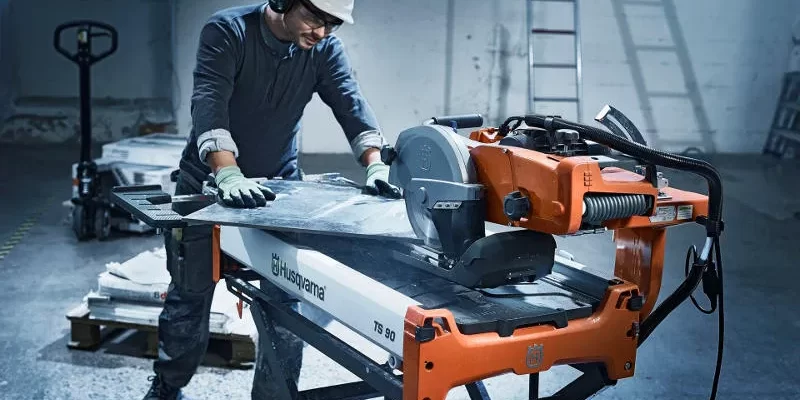Cutting granite requires powerful, precise tools that can handle the stone’s density and hardness. Selecting the right granite saw is essential for achieving clean cuts and efficient workflow, whether for countertops, tiles, or custom stonework. This article reviews key considerations when choosing a granite saw and the types of saws available to help users make informed decisions for their specific cutting needs.
For a selection of granite saws and equipment, visit BB Industries to explore the options.
Types of Granite Saws
Granite saws are designed with specific features to cut through dense stone without compromising precision. Here are some commonly used types:
- Bridge Saws: Bridge saws are heavy-duty machines used for making straight cuts in large granite slabs. They are highly precise and are often used in professional settings for large projects.
- Wet Saws: These saws use water to cool the blade and reduce dust, making them ideal for cutting granite. Wet saws help maintain blade longevity and prevent cracks in the stone due to overheating.
- Handheld Saws: Handheld saws, often equipped with diamond blades, are more portable and flexible, making them suitable for smaller or more intricate cuts. They provide versatility in cutting but may require additional control for accuracy.
- Table Saws: Table saws are stationary tools that offer stability and control for granite cutting. With the proper diamond blade, table saws can make precise cuts in smaller slabs or tiles.
Each type of saw serves a distinct purpose, allowing users to select equipment that best fits their project’s size and complexity.
Key Considerations for Selecting a Granite Saw
Choosing the right granite saw involves evaluating several factors to ensure that it meets the demands of the project:
- Cutting Capacity: The size and thickness of the granite slabs or tiles being cut will determine the required cutting capacity of the saw. For larger slabs, a bridge saw or a wet saw with a large blade diameter may be necessary.
- Portability vs. Stability: Handheld saws offer portability, which can be beneficial for smaller projects or when mobility is required. However, for larger, more precise cuts, a stationary saw, such as a table or bridge saw, provides greater stability.
- Blade Compatibility: Ensuring that the saw is compatible with diamond blades designed for granite is crucial. Diamond blades offer the durability and precision needed for clean cuts on hard stone.
- Wet or Dry Cutting: Wet saws help control dust and maintain blade temperature, which can extend blade life and improve cutting quality. Dry cutting options may be preferred for projects where water use is limited but often produce more dust.
Considering these factors can help in selecting a saw that provides both efficiency and accuracy, contributing to professional-quality results.
To browse available options, check out granite saw for sale for a variety of saws suited to granite cutting.
Safety Tips for Using Granite Saws
Granite cutting involves handling powerful equipment and working with heavy stone, so following safety guidelines is essential:
- Wear Protective Gear: Safety goggles, gloves, and ear protection are necessary to protect against debris, blade fragments, and noise.
- Use Proper Ventilation: If using a dry saw, ensure that the area is well-ventilated to reduce exposure to dust. Using a respirator or dust mask can help protect against inhaling fine particles.
- Secure the Granite: Position and secure the granite slab on a stable surface to prevent movement during cutting. This step ensures precision and reduces the risk of accidents.
- Check Blade Condition: Regularly inspect the saw blade for signs of wear or damage. Replacing worn blades improves cutting quality and enhances safety.
Adhering to these safety measures creates a safer work environment and ensures better control when working with granite saws.
Maintenance Tips for Granite Saws
Proper maintenance of granite saws can prolong their lifespan and maintain their performance over time:
- Clean the Saw After Use: Removing dust and debris from the saw and blade after each use prevents buildup that can interfere with performance.
- Inspect the Blade: Regularly check the blade for wear and replace it as needed. A sharp, intact blade ensures clean cuts and reduces the strain on the motor.
- Check Water Lines on Wet Saws: For wet saws, ensure that the water lines are clear and flowing properly to maintain cooling during operation.
- Lubricate Moving Parts: Periodically lubricate the saw’s moving components to ensure smooth operation and prevent mechanical wear.
Maintaining granite saws properly enhances their durability, helping them perform consistently for future projects.
Achieving Precision and Efficiency with the Right Granite Saw
Using a high-quality granite saw suited to the project’s needs ensures precise, efficient cuts that maintain the integrity of the stone. By choosing equipment that matches the scope and complexity of the work, users can achieve professional results, whether cutting large slabs for countertops or making intricate cuts for custom designs. BB Industries offers a selection of granite saws designed to meet the demands of granite cutting, providing reliable options for those seeking precision and durability in their tools.












Comments